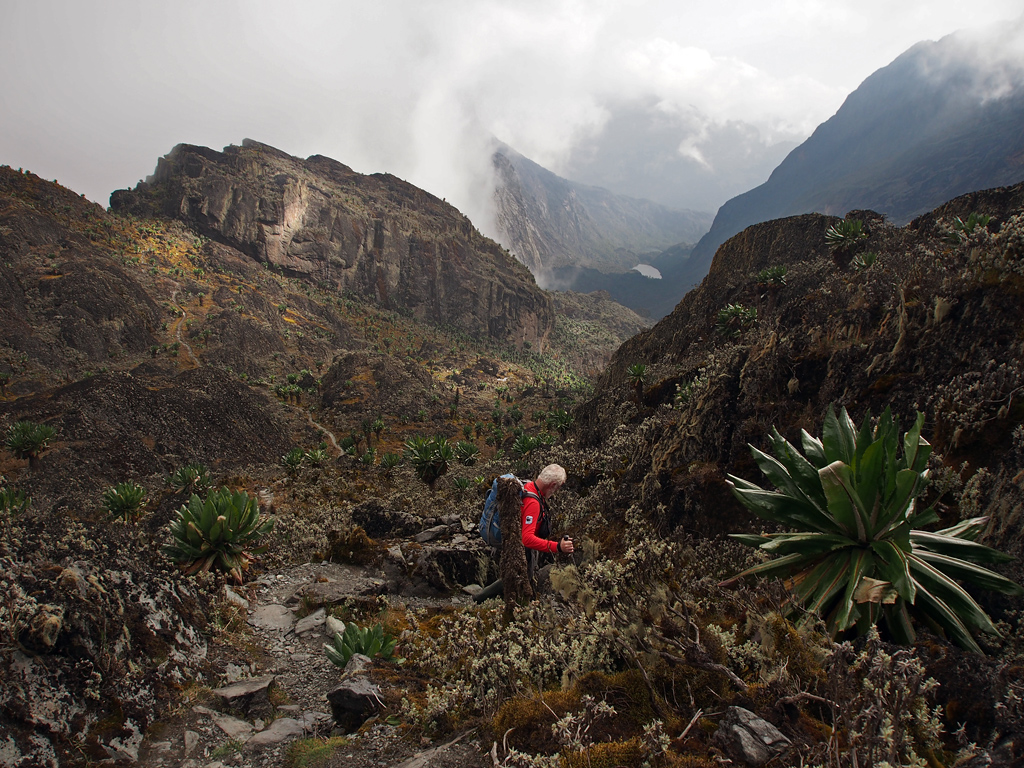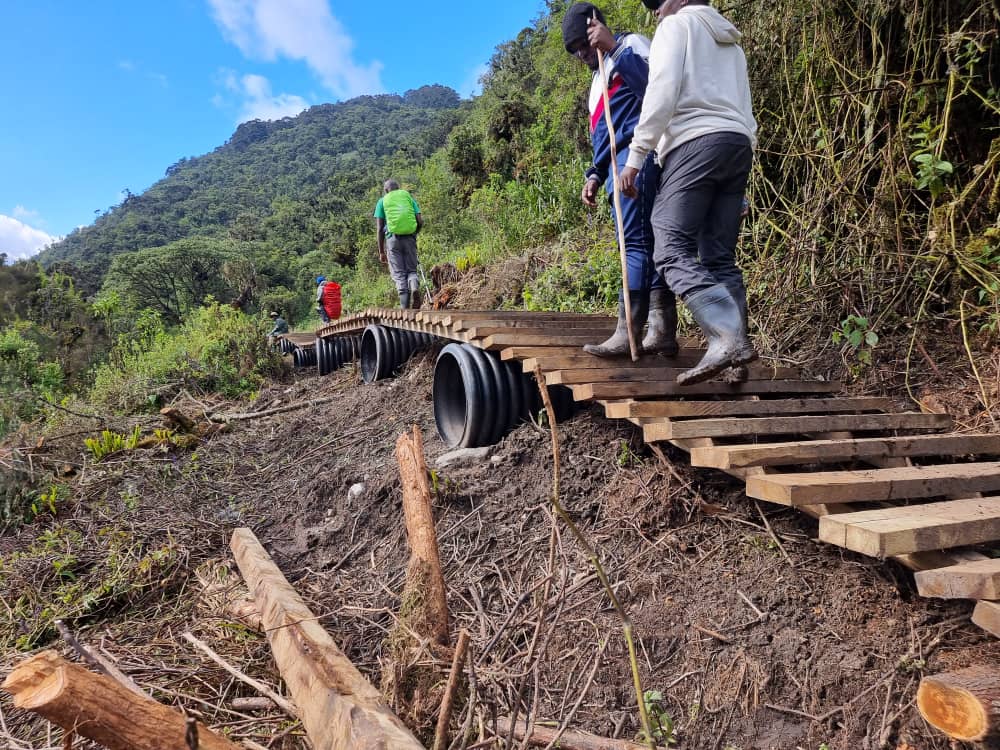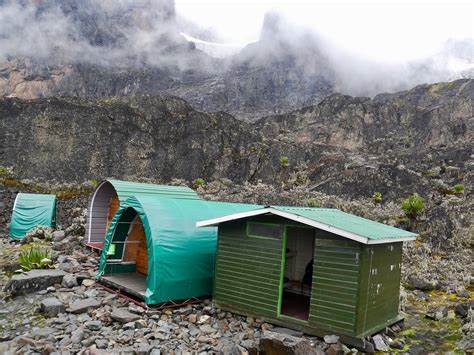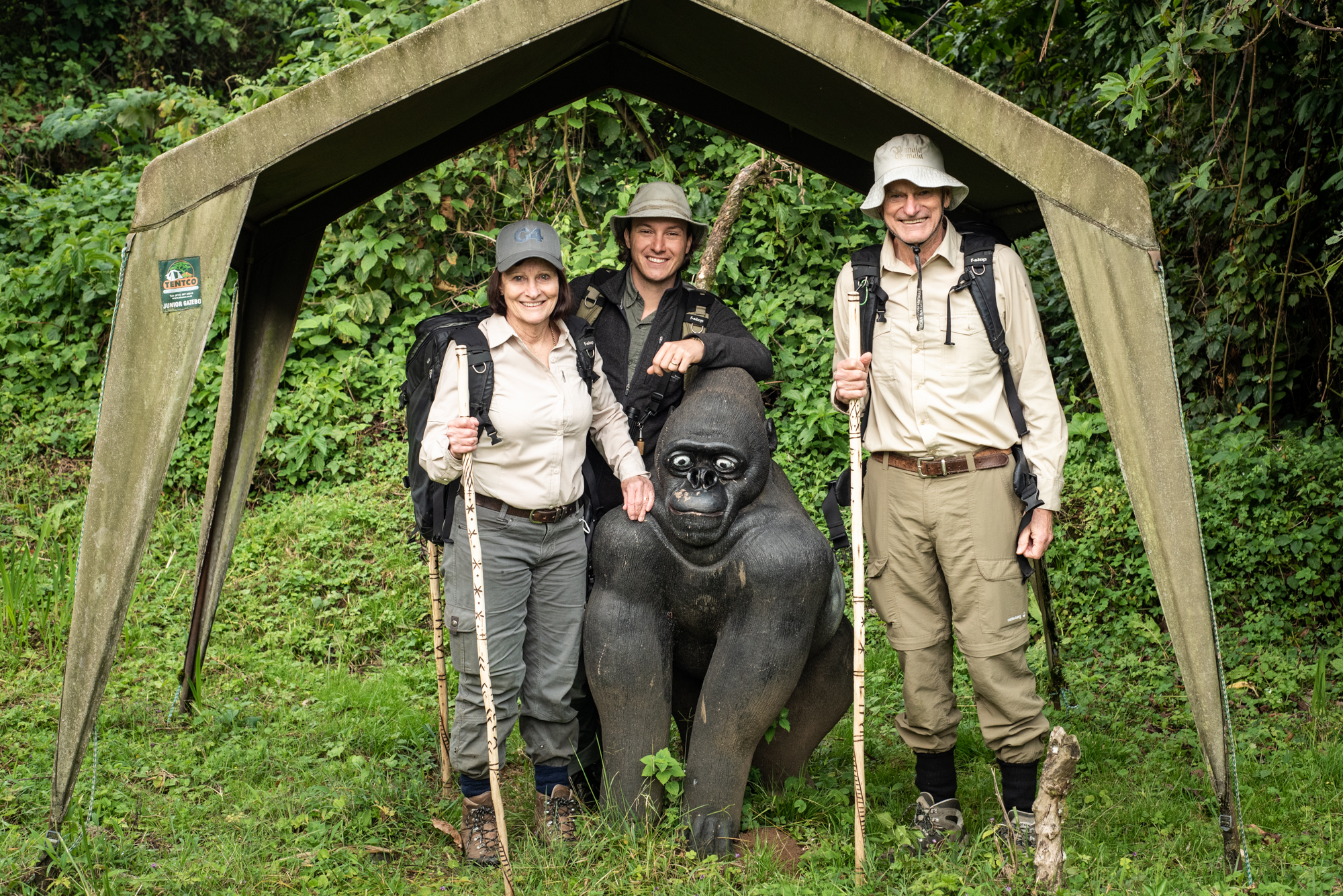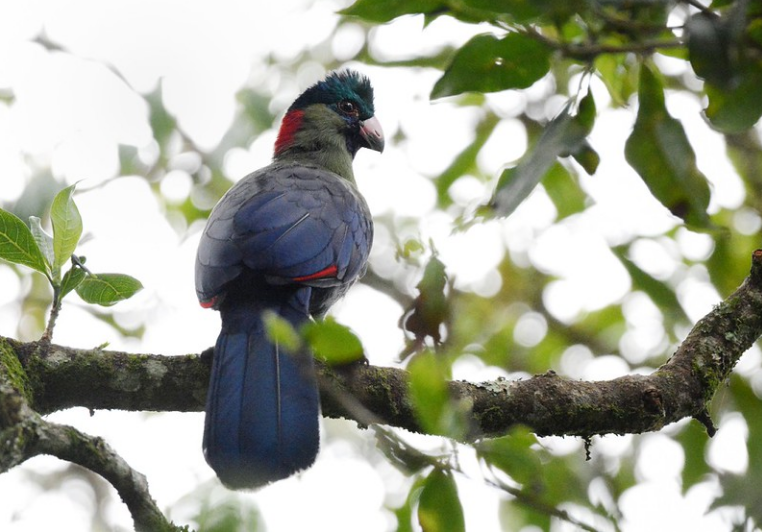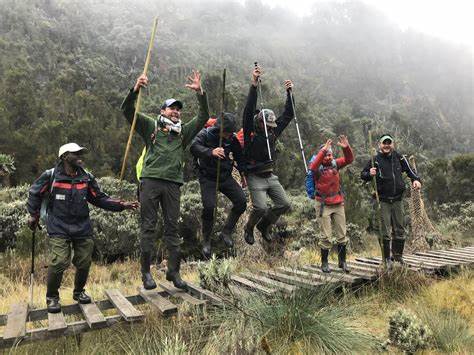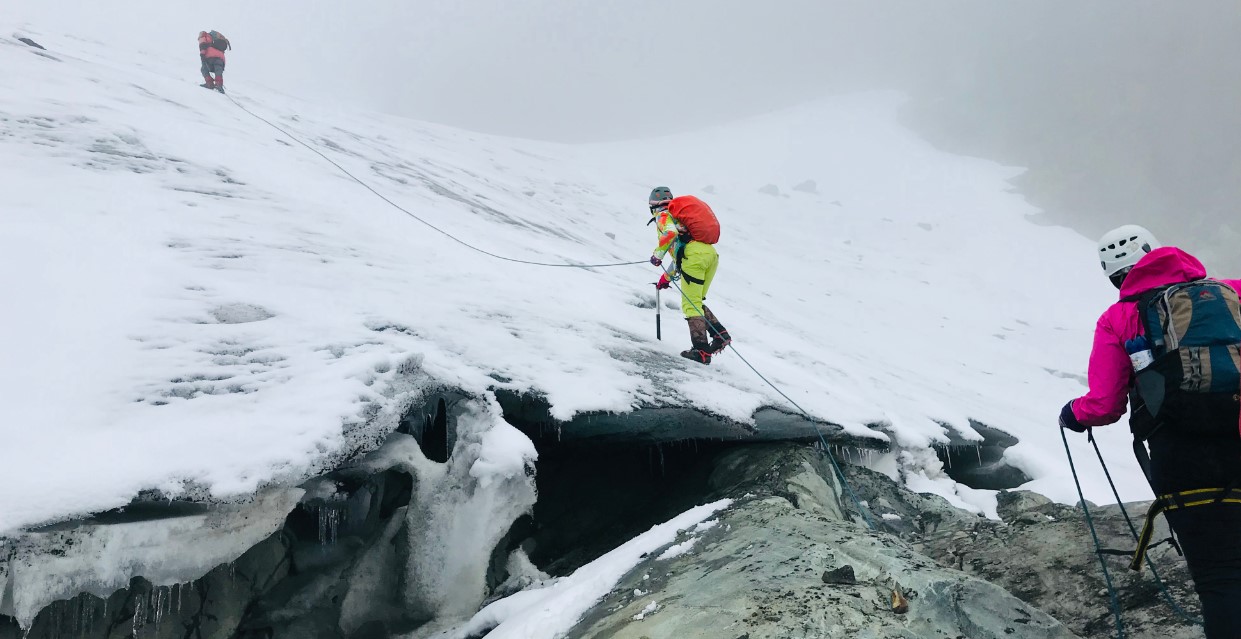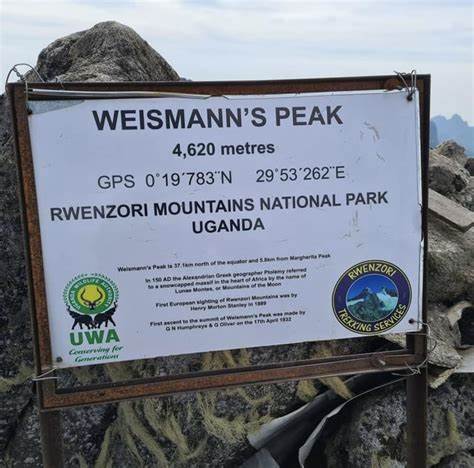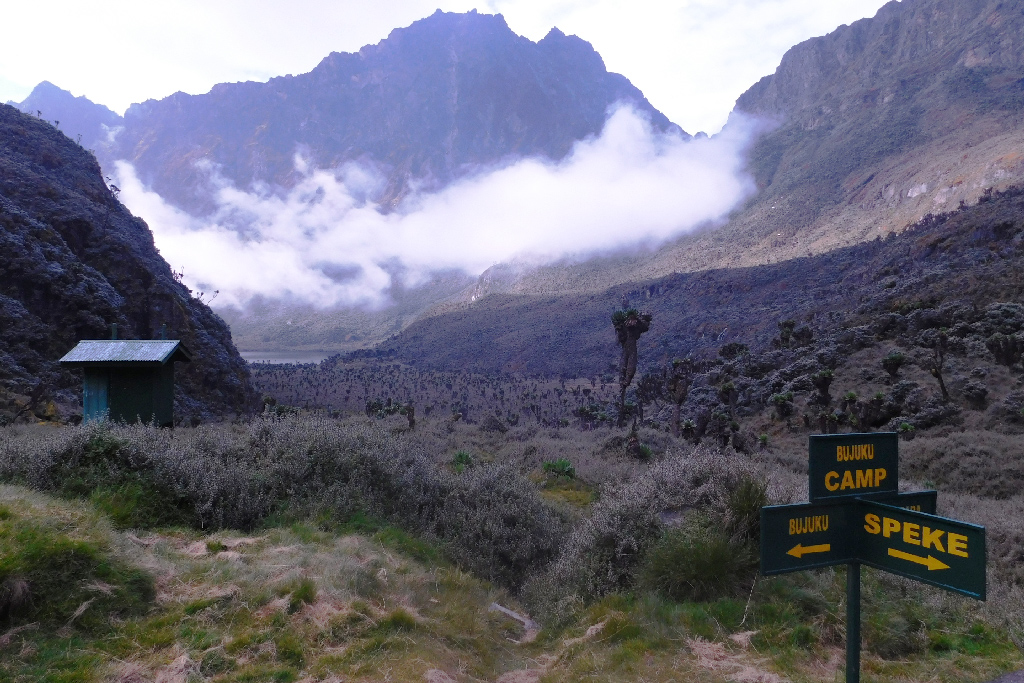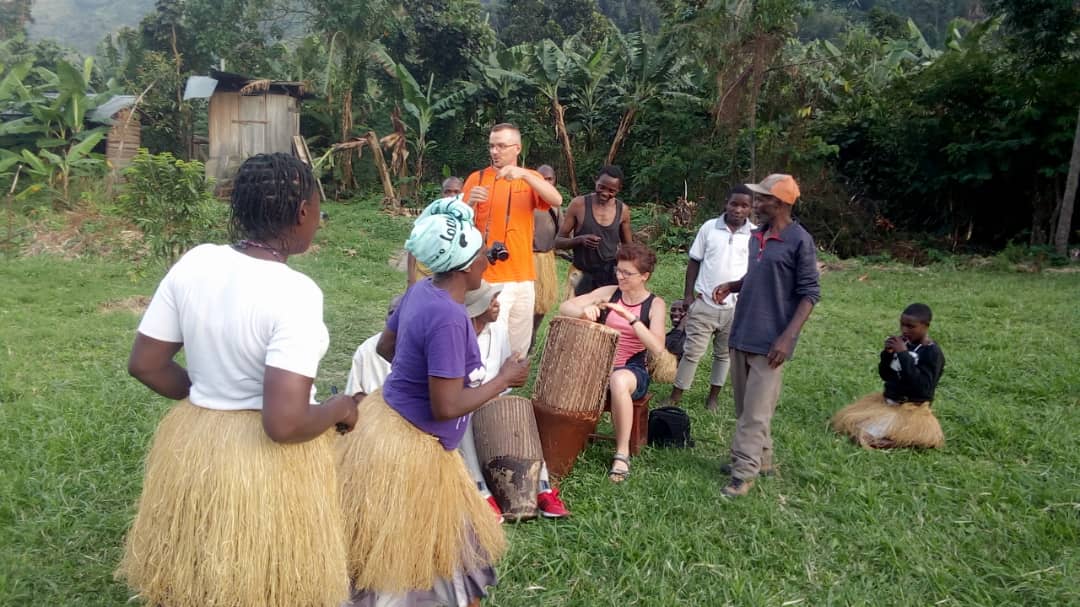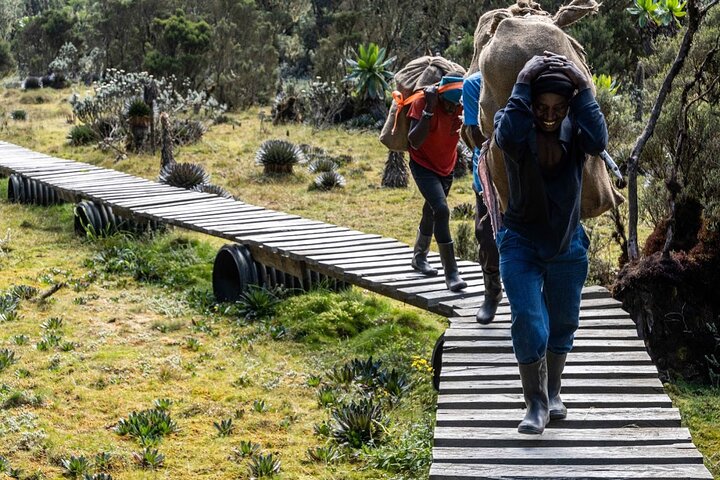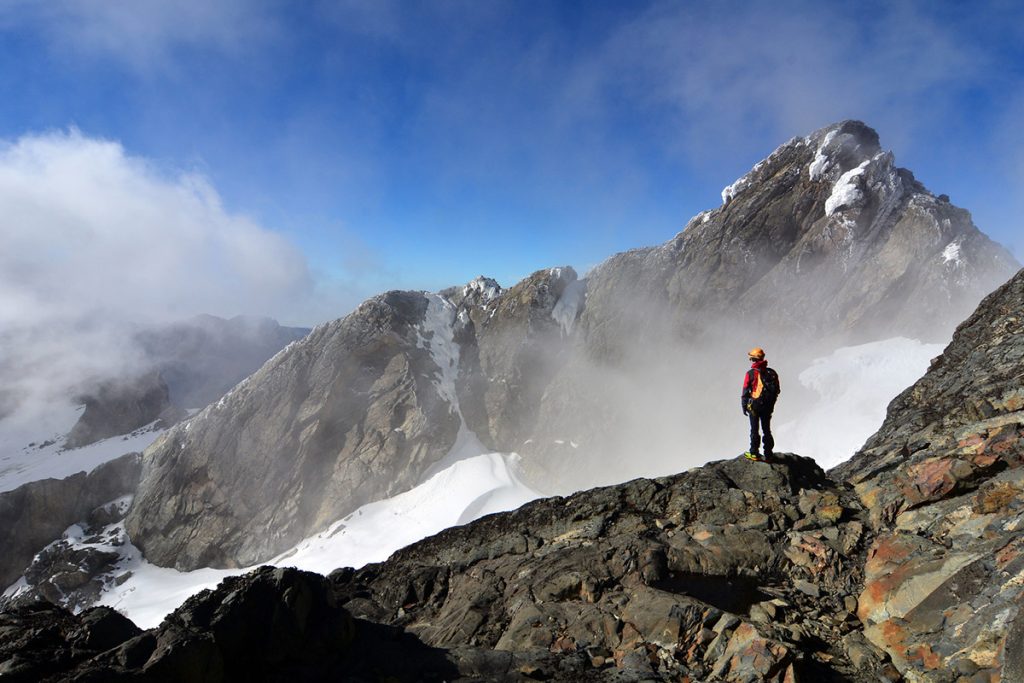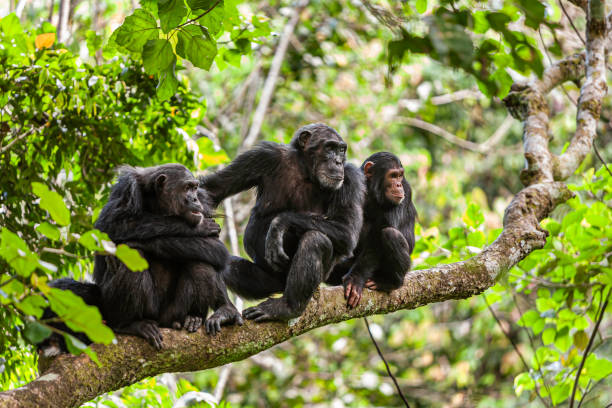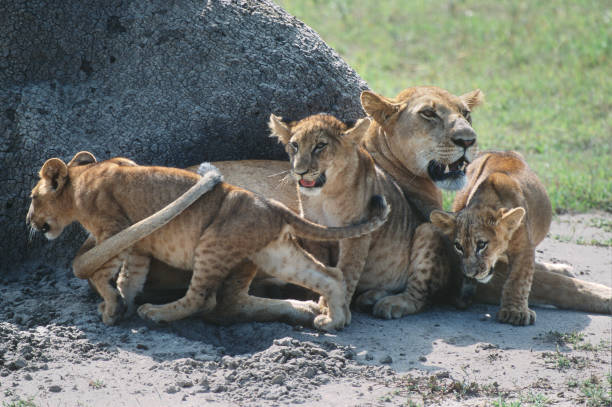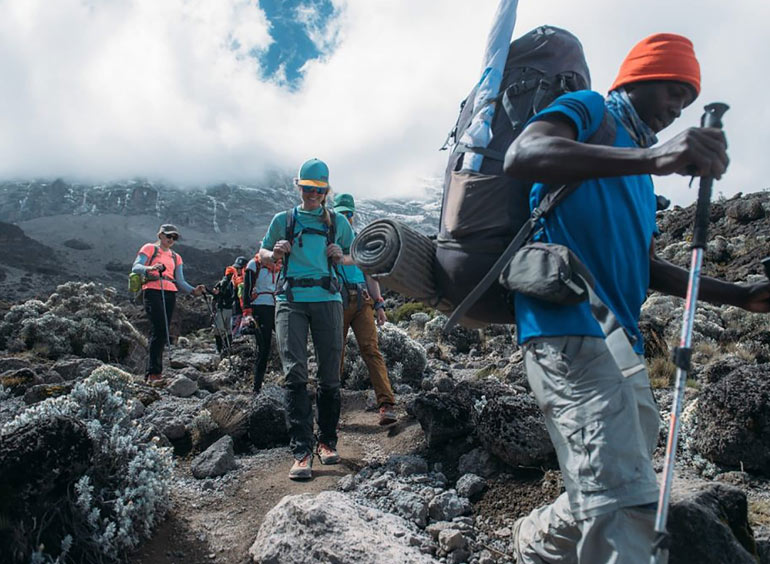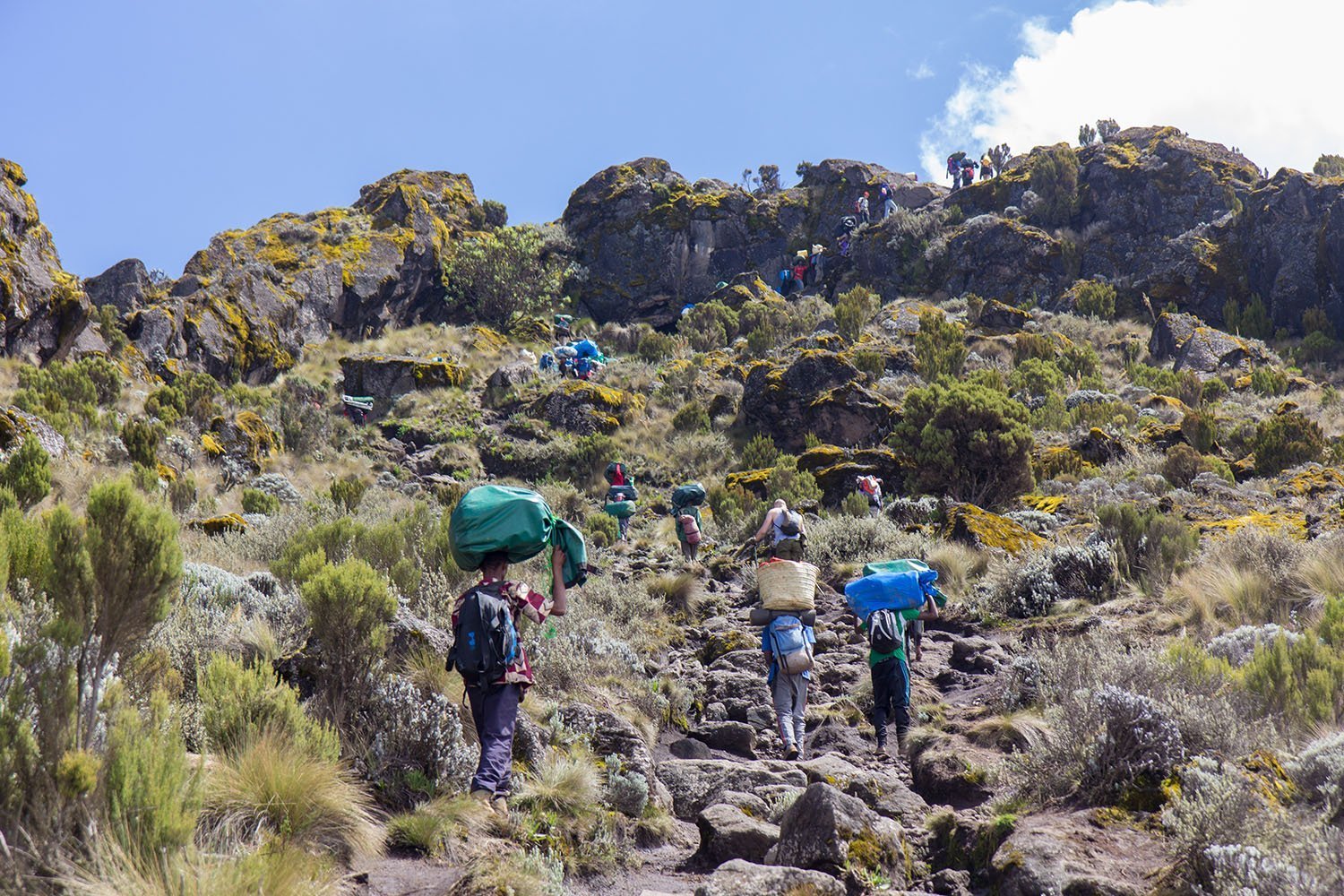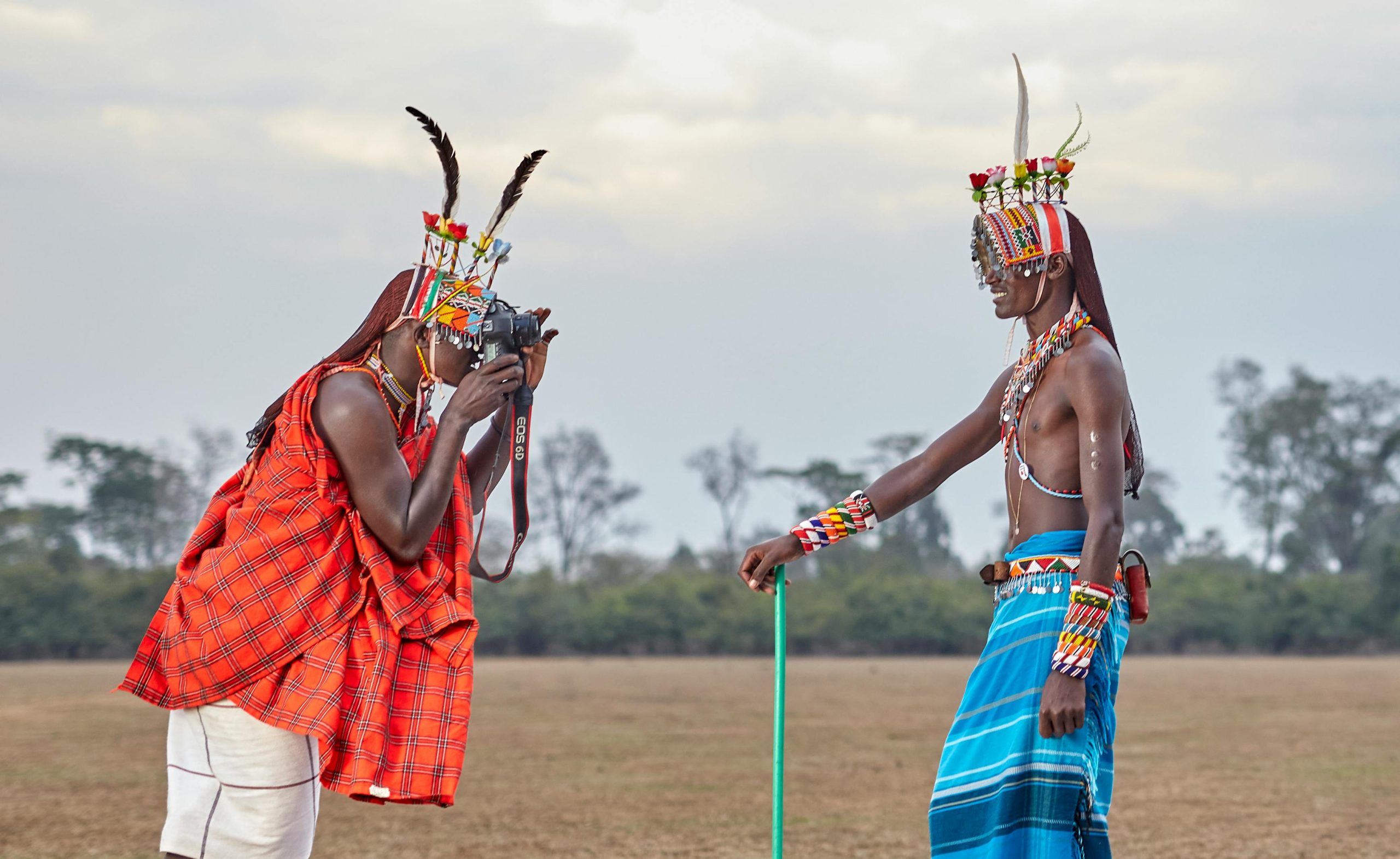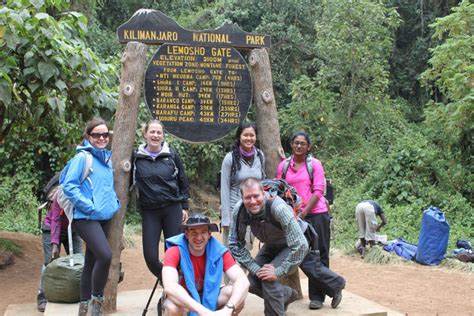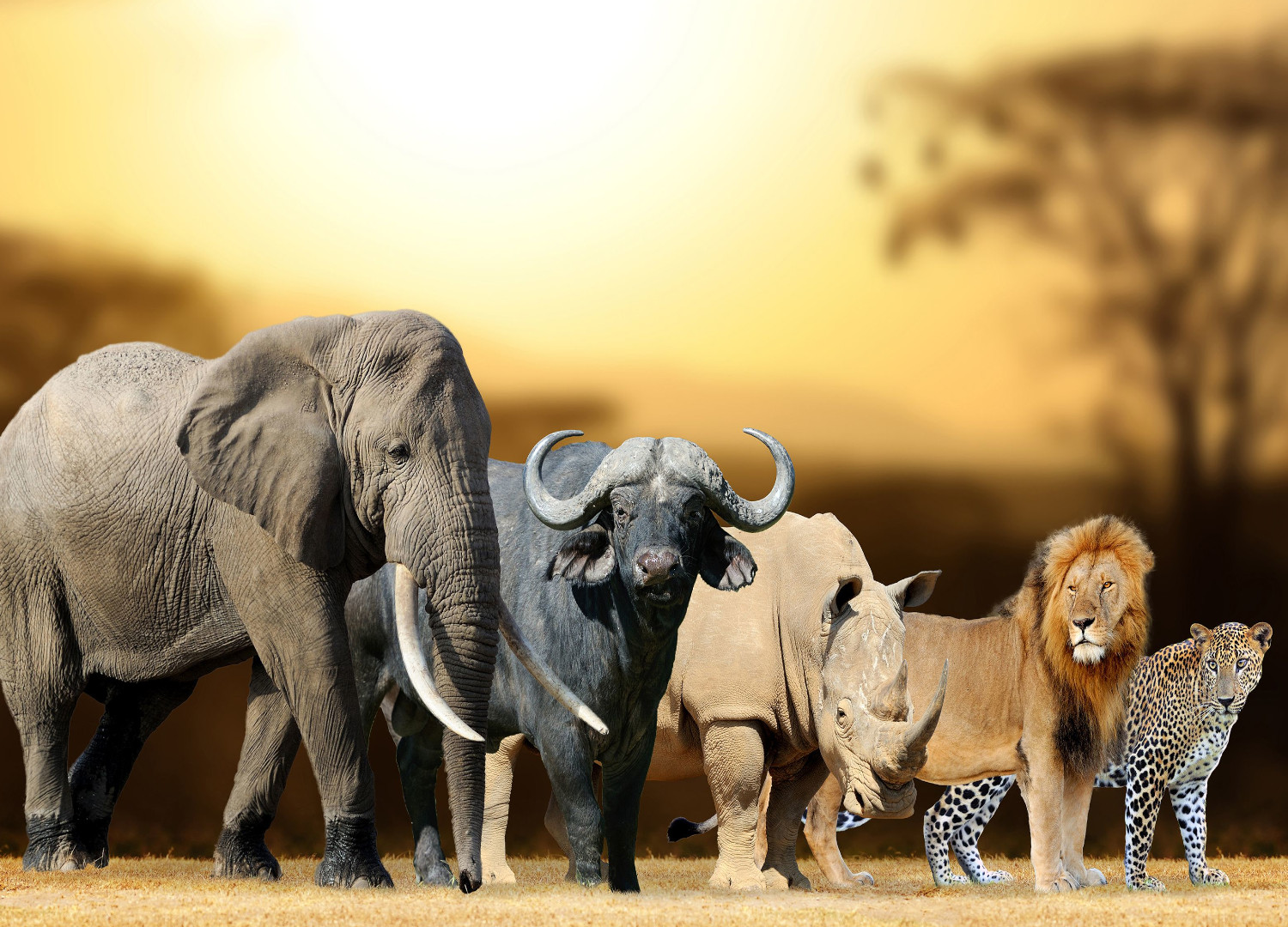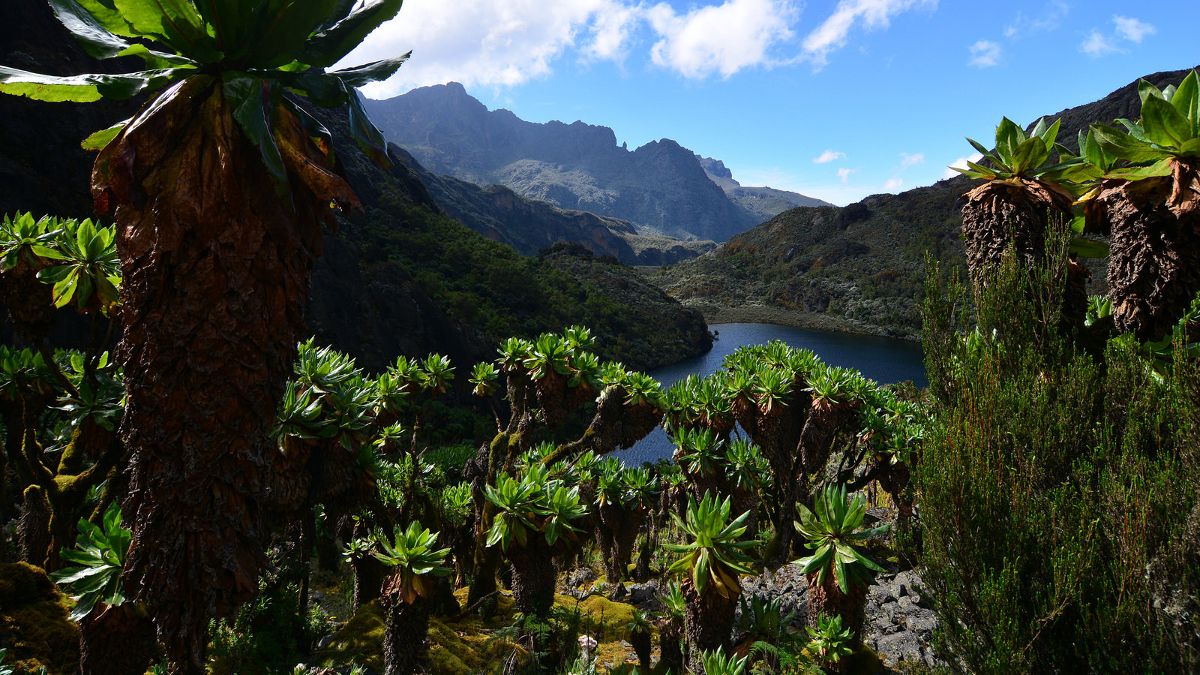
Rwenzori vs Kilimanjaro: Explore the breathtaking contrasts between Mountain two iconic peaks offering a trekking adventure of a lifetime.
Rwenzori vs Kilimanjaro: Which one is better for hiking?
Rwenzori vs Kilimanjaro comparison is necessary for one who would want to trek/climb any of these two iconic mountains in East Africa. When considering an African trekking or hiking adventure, Rwenzori and Kilimanjaro mountains stand out as two of the most thrilling and picturesque destinations. Each mountain offers a distinct experience that draws trekkers from around the globe. Whether you seek the remote wilderness of mountain Rwenzori or Kilimanjaro, this guide assists you in choosing your next adventure.
Rwenzori vs Kilimanjaro: Exploring these Majestic Mountains
There are few African destinations that offer more rewarding trekking and climbing as do Uganda’s Mount Rwenzori or Kilimanjaro of Tanzania. Rwenzori Mountains are located in the eastern parts of Uganda and one of the finest mountains hence serving as a holiday destination for visitors with a need for adventure. Mt Kilimanjaro and Mt Kenya stands at higher but their routes is less challenging than most summits in Rwenzori. Note that mount Kilimanjaro is among the 22 Tanzania National Parks.
These summits in Mountain Rwenzori are a great view but simultaneously entail painful paths both for novices and experienced persons. The green ranges of Rwenzori in Uganda include several ranges of flora and fauna while on a trek. Thereby, a traveler can have never-to-be-forgotten journeys.
This can complement the safari in Uganda with a visit to the Uganda Rwenzori Mountains for mountain climbing and wildlife experiences. Most tours and safaris to Uganda involve visits for appreciation of the rich natural beauty of the region.
If you’re considering climbing and hiking the famed mount Kilimanjaro peaks, just across the border in Tanzania, it’s worth noting that this iconic mountain, known as Mount Kilimanjaro, is a bucket-list destination for trekkers worldwide. With options for various skill levels, climbing mount Kilimanjaro in Tanzania offers a different yet equally rewarding adventure.
Rwenzori vs Kilimanjaro
While Africa is the location for both the Rwenzori and Kilimanjaro mountains, these two places promise great views. Also, exciting challenges, and an opportunity to get a feel of the incredible African wild unforgettablerness. The conquests over the summits of the Rwenzori Mountains or taking a trip to climb Kilimanjaro is an unforgettable trekking adventure.
Combine your trip with the best African safari tours featuring both mountain and wildlife adventures to get the best experience. From the beautiful Rwenzori or Kilimanjaro mountains, your journey is going to be a moment of appeal. Below is a detailed Rwenzori vs Kilimanjaro guide for you.
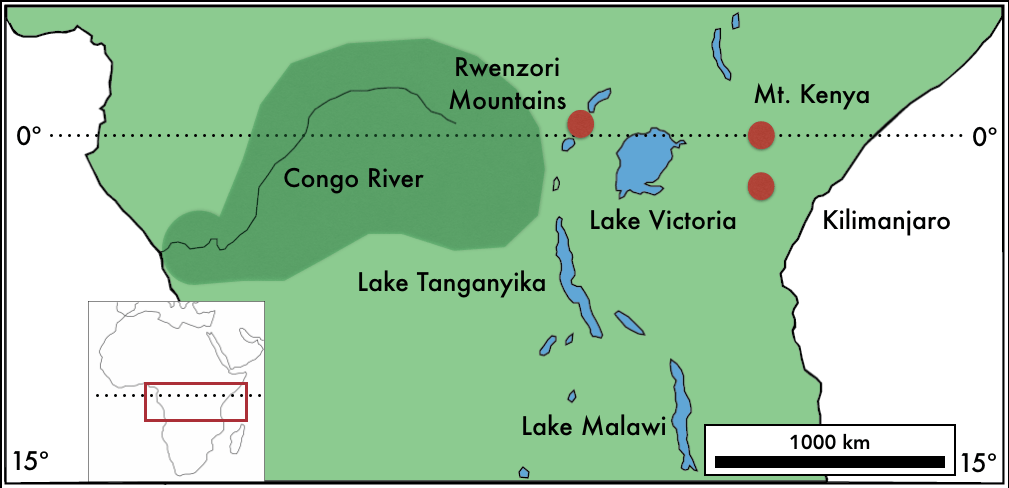
Mount Rwenzori: The Mystical Mountains of the Moon- Rwenzori Kilimanjaro
Kilimanjaro Rwenzori trekking experts are here to guide you through which mountain is better for hiking either Kilimanjaro or Rwenzori. Lets dive in more about the specifics of mountain Rwenzori in Uganda with our Rwenzori vs Kilimanjaro guide.

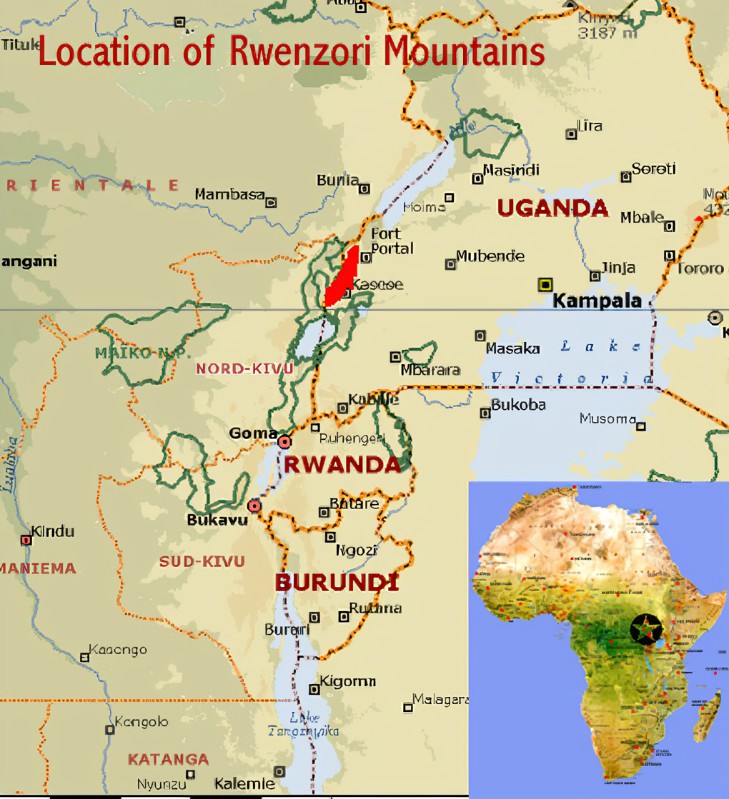
1. Inspiring Landscapes and Exceptional Ecosystems
In Uganda, the dramatic landscapes of Rwenzori Mountains aresmothered with mist, hence their nickname “Mountains of the Moon.” The area is one of the newest UNESCO World Heritage sites and the ultimate trekker’s paradise with ecosystems that vary from tropical rainforests, bamboo forests to alpine meadows, and glaciers.
2. A True Wilderness Experience
These Rwenzori mountainous regions are ideal for people who want solitude and a deep connection with nature. Hiking and trekking Mountain Rwenzori offer an unspoiled wilderness experience, while the trails are less traveled in comparison to mountain Kilimanjaro in Tanzania. The tough trails, variation in altitude, and lack of big crowds will make this the ideal destination for trekkers and climbers interested in being completely immersed in untainted nature.
More about Rwenzori Mountain
3. Rwenzori Trekking Routes and Challenges
The Central Circuit is the most popular route, following a path that leads in a circle right through the heart of the mountain Rwenzori range. It takes about 7 to 9 days to complete and its rugged with steep ascents and quite unpredictable weather; however, the rewards are immense-great views, varied flora and fauna, and the ultimate achievement: reaching Mount Margherita, the third-highest peak in Africa.
4. Rwenzori Cultural Immersion
Mount Rwenzori is both a natural wonder and a cultural treasure. The local Bakonzo people have inhabited these mountains for generations and will offer mountain trekkers Rwenzori the chance to immerse themselves in traditional Ugandan culture. Communities you will come across and engage with to study their customs, observe their crafts in a way that will contribute to the great cultural element during mountain Rwenzori trekking and climbing. These interactions form the insight necessary toward the indigenous ways of living, thereby enriching the guest’s perception regarding regional cultural heritage.
Mount Kilimanjaro, Tanzania: The Roof of Africa- Rwenzori vs Kilimanjaro
Let’s take a look at mount Kilimanjaro in Tanzania as we compare the Rwenzori vs Kilimanjaro debate on which mountain would be best to climb.
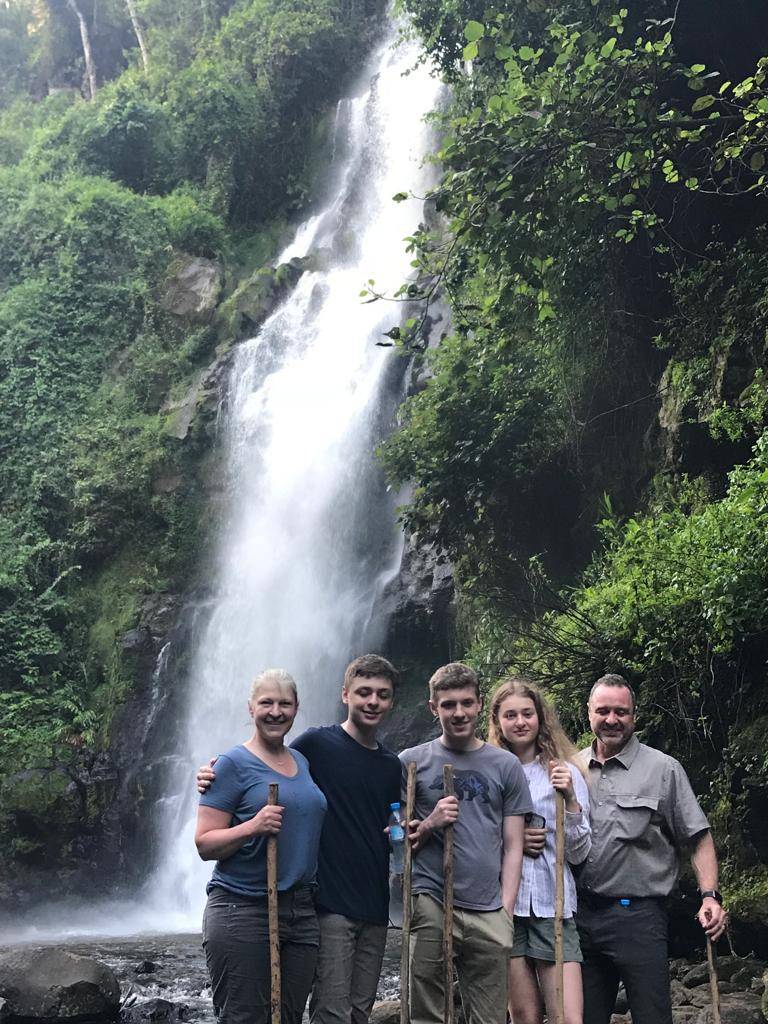
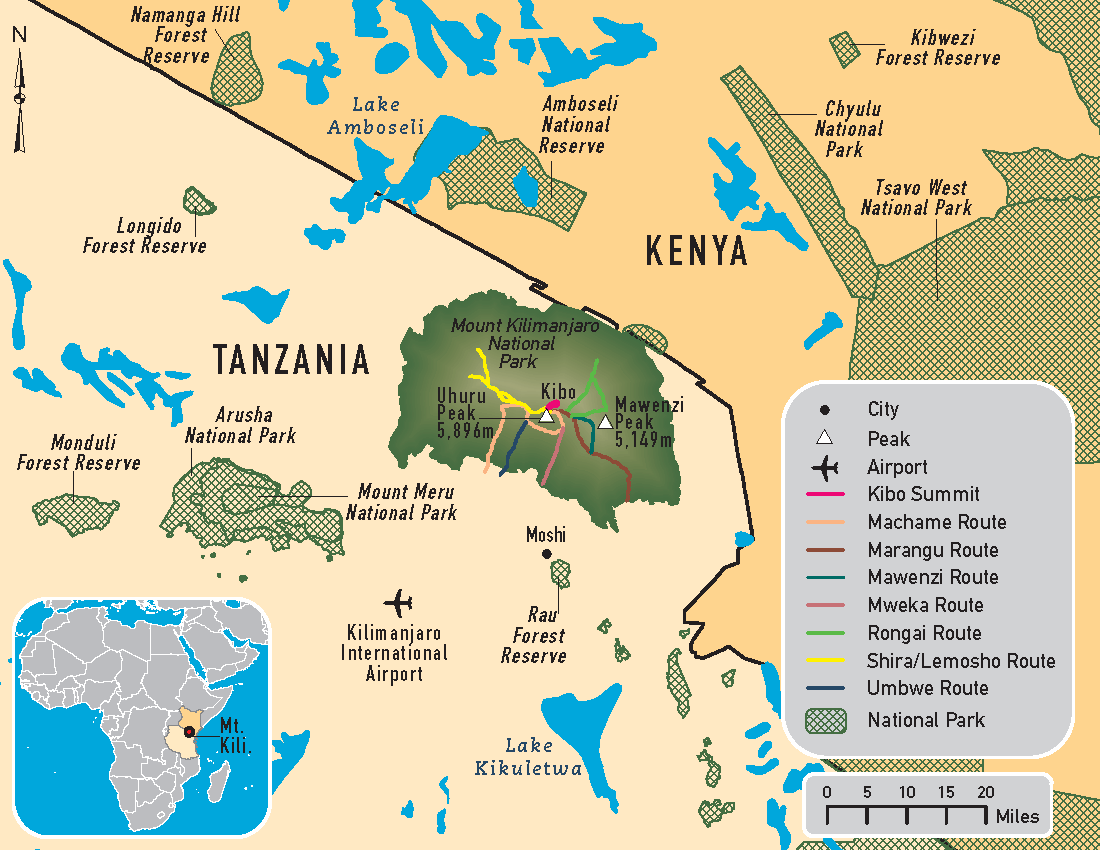
1. Kilimanjaro’s Iconic Summit and Panoramic Views
Mount. Kilimanjaro, Africa’s highest peak, has a height of 5,895 meters and is one of the most popular mountains in the world. This snow-capped summit called Uhuru Peak in Tanzania is a free-standing tallest mountain in the world. Mountain Kilimanjaro trekking and hiking to the top mean passing through different climatic zones, from tropical rain forests at the base to arctic desert near the summit. With one foot standing on the panoramic views of Uhuru Peak, mountain Kilimanjaro trekkers and climbers can enjoy the sunrise over the boundless African plains.
2. Diverse Kilimanjaro Trekking Routes
Mountain Kilimanjaro has a number of routes upward for trekking and climbing, each having its own merits. The Marangu Route is also known as the “Coca-Cola Route,” and it’s the most popular. This route provides hut accommodations along the way, hence one of the more comfortable options. Machame Route is more challenging and scenic, with much steeper trails and camping en route. Lemosho and Rongai offer more solitude and different perspectives of the mountain. Each route gives a different experience, yet all of them lead to the ultimate goal of reaching Uhuru Peak.
More about Mountain Kilimanjaro
3. Climbing Kilimanjaro with Confidence
Climbing Kilimanjaro is an achievable challenge to many. Properly prepared for by experienced guides, mountain trekkers and climbers of Kilimanjaro of different skills can make their way to the summit. On guided tours in Kilimanjaro Rwenzori trekking experts, rest assured that you are fitted out, well acclimatized, and supported during the climb. Guided by highly qualified guides knowledgeable in the peculiarities of Kilimanjaro’s nature and with experience, all safety precautions, and motivational support, mountain climbing and hiking become a lot of fun without any risk.
4. Local Culture and Community Involvement
The Chagga people are found on the slopes of mountain Kilimanjaro and are very vital in the culture of trekking and climbing the mountain Kilimanjaro. Visitors can go on cultural tours, visit coffee farms, and learn about the traditions of the Chagga people. These experiences add a cultural layer to your mt Kilimanjaro trek, providing a deeper connection to the land and its people. The Chagga people also are involved in the conversations, ensuring that the future of Mountain Kilimanjaro is well-preserved.
Rwenzori vs Kilimanjaro: Which Mountain Is Right for You?
- Adventure Level: Rwenzori vs. Kilimanjaro
- Scenery and Diversity: Rwenzori vs. Kilimanjaro
- Trekking and Climbing Time: Rwenzori vs. Kilimanjaro
- Accessibility: Rwenzori vs. Kilimanjaro
- Conclusion
1. Adventure Level: Rwenzori or Kilimanjaro
On matters of adventure when comparing Rwenzori vs Kilimanjaro, they differ in the varied interesting action that involves various categories of both trekking and climbing enthusiasts. A better insight into the adventures each called for shall be a sure guide to selecting between them to suit an adventure that best meets your skills and fitness, aside from urgings for it.
Mount Rwenzori: A Journey into the Wild
- Mount Rwenzori has been considered one of the most difficult regions in Africa to trek or climb. The topography is harsh, not easily accessible, and at times very unpredictable, with steep ascents, rocky paths, and deep valleys. These less developed trekking routes compared to those on mountain Kilimanjaro, adding to the feeling of isolation and adventure. Mountain Rwenzori is ideal for seasoned adventurers who love overcoming obstacles in some of the most remote and wild landscapes on earth.
- Technical Climbing Challenges: Climbing Mount Margherita, the highest peak in mountain Rwenzori ranges, has technical sections that require mountaineering skills. It involves scrambling, glacier travel, and negotiating crevasses on the ascent. Climbers and trekkers on Mountain Rwenzori should prepare for physical demands with regard to high-altitude climbing besides the technical issue arising out of that.
- Variable Weather: Rwenzori Mountain boasts variable weather, raining, overflows of mist, and sometimes it does snow at its height. It makes the Rwenzori trekking to be more challenging since, with changing weather conditions, one should be prepared with proper preparation for such an instance. This can turn what would have been a hard hike into a challenging adventure and hence makes mount Rwenzori suitable only for those who are prepared for such mentally and physically.
- Smaller Crowds and Real Wilderness: One thing that really marks Rwenzori trekking and climbing apart is quietness. Unlike mountain Kilimanjaro, the trails on this mountain have far fewer visitors, so less disturbance to others and more communing with real wilderness. Due to this factor, the trip seems an exclusive adventure into a nook in one of the last true Africa wilderness areas.
Mount Kilimanjaro: A Legendary Ascent
- The Iconic and Accessible Challenge: Mount Kilimanjaro, while really high, is considered to be accessible for a wide range of trekkers-from complete beginners to quite experienced climbers. These Kilimanjaro routes are very well traveled and marked, and the infrastructure surrounding them-such as huts, campsites, and guiding services-is similarly good. Mount Kilimanjaro climbing is made safe with support from the experienced guides and proper acclimatization.
- Variety of Routes for Different Skill Levels: Mountain Kilimanjaro has several routes for trekking and climbing, each differing in their level of difficulty and duration. The Marangu Route is the most direct and is often recommended for inexperienced trekkers. The Machame Route is more difficult and panoramic thus more appropriate to visitors with increased levels of physical need. Lemosho and Rongai Routes take a much longer duration but will deliver the most solitary walks of adventure, devoid of highly technical needs with mountain Rwenzori.
- High-Altitude Trekking: The summit of Mount Kilimanjaro, Uhuru Peak, sits at 5,895 meters above sea level, and thus it is considered a high-altitude climb that requires appropriate acclimatization. Mountain Kilimanjaro trekkers and climbers must be ready for the influence of altitude, even with possible altitude sickness. The Mountain Kilimanjaro trekking tour is very physically demanding and at the same time mentally challenging-especially the final night of summiting, also called the “summit night.”
- It’s far more social: Unlike the solitary Mountain Rwenzori climb, Mountain Kilimanjaro presents one with more company socially. The Kilimanjaro climbing routes are popular, and you’re likely to encounter fellow trekkers from around the world. Additionally, the cultural aspect of the climb is significant, with the local Chagga people playing a vital role as guides and porters.
Kilimanjaro or Rwenzori: Which Trekking Adventure Is Right for You?
Mount Rwenzori will suit the experienced trekker/hiker who seeks a rough, and technical challenge in an uncongested environment for trekking and climbing. This truly is a wilderness experience that requires mental toughness, physical endurance, and love of solitude.
On the other hand, Mount Kilimanjaro stands as a well-trodden, generic, and accessible adventure to most trekkers. Having established high-altitude routes, very rich cultural experiences, and a well-structured route to the summit. Mount Kilimanjaro perfectly suits those in search of a legendary climb with both physical challenge and cultural immersion.
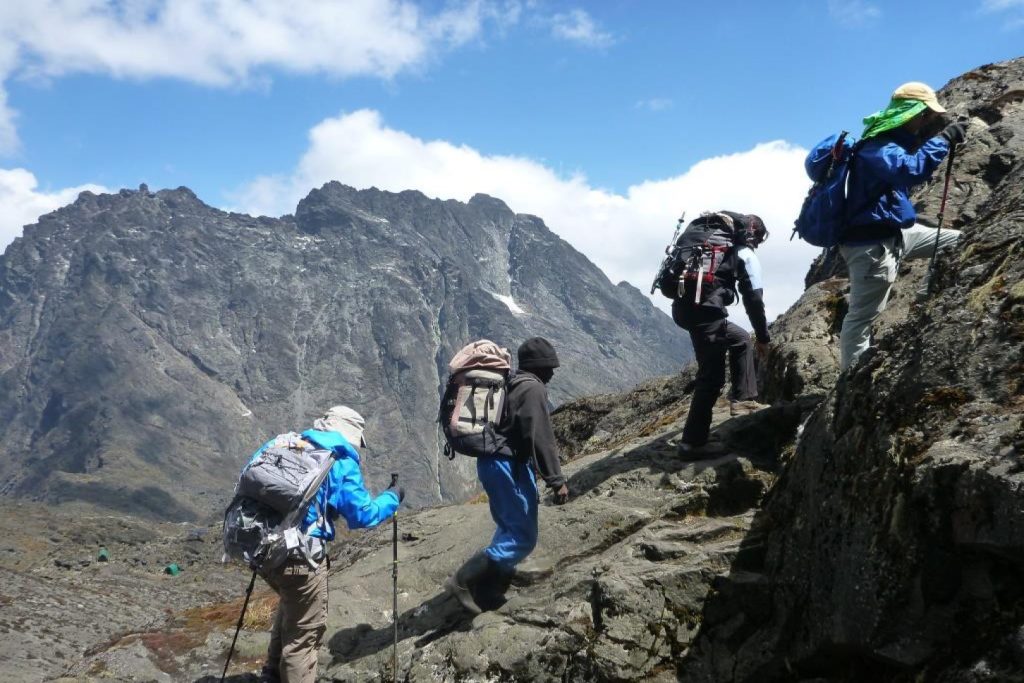
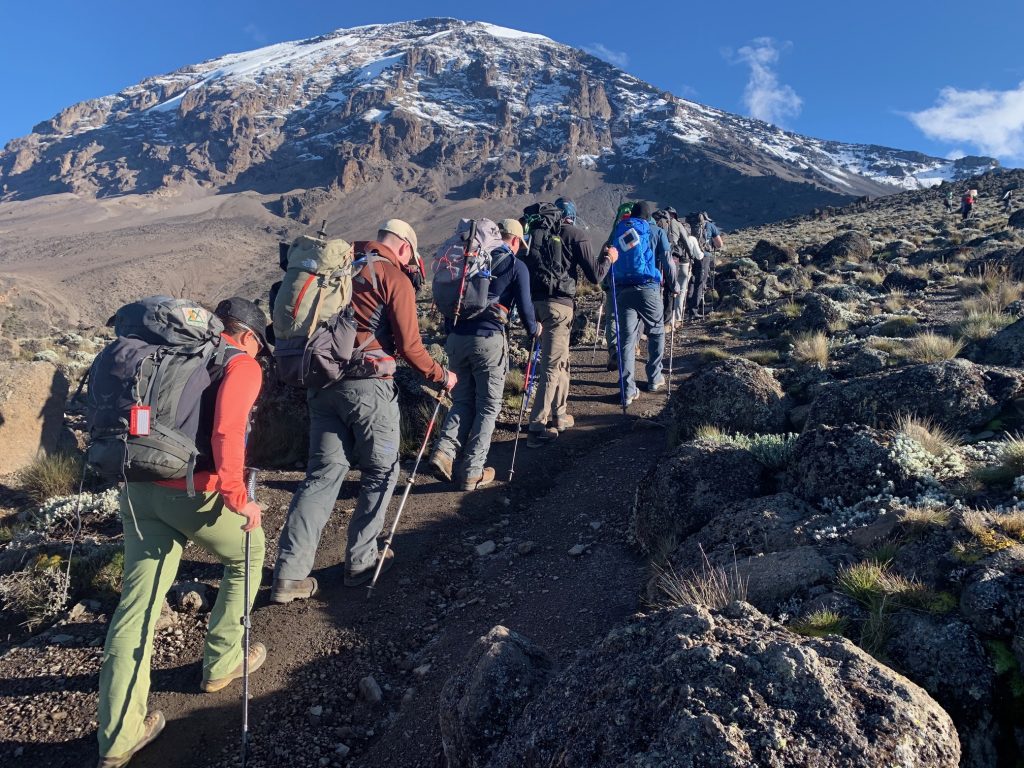
2. Rwenzori vs Kilimanjaro: Scenery and Diversity
Mount Rwenzori or Kilimanjaro combined form two of the most striking mountain sceneries in Africa, with ecological diversity. Each mountain offers a different experience, from tropical forests to alpine deserts and glaciated peaks. Understanding the specific scenery and diversity of these mountains will help you choose the adventure that best fits your expectations and interests.
Mount Rwenzori: The Enigmatic Mountains of the Moon
- Unrivaled Ecological Diversification: Rwenzori Mountains, at times referred to as the “Mountains of the Moon,” are endowed with unrivaled ecological diversification. The Rwenzori Mountains Range, a UNESCO World Heritage Site, encompasses diverse ecosystems that undergo extreme changes in different elevations. Mountain Rwenzori trekkers and climbers will meet at the foot and lower parts heavy montane forests dominated by high canopy cover and understorey development. With altitudes, there are changes from bamboo forests to the unreal heather zone dominated by giant lobelia and groundsel, then onwards and upwards into the alpine zone with rock outcrops and glacial valleys. Right at the top, the Afro-alpine with snow-capped peaks, glaciers, and views.
- The Mystical Allure of the Misty Mountains: Weather conditions in Mountain Rwenzori are very unpredictable, with regular mists and rains that periodically shroud the mountains in a mystical veil. This heightens the sense of adventure and other-worldliness as one treks through Rwenzori. When the mist often lifts, some of the greatest views may be found with glaciated peaks, deep valleys, and cascading waterfalls, hence bringing into an individual the thrill of discovery at the uncovering of such vistas. Dynamic, shifting landscapes make the Rwenzori trekking ideal for those who appreciate raw, untouched wilderness with surprises around each bend in their changing landscapes.
- Unique Flora and Fauna: Unique to the Rwenzori Mountains are a haven for unique and endemic species. The lower slopes host an abundance of wildlife, with colobus monkeys and blue monkeys being some of the primate species, plus many bird species. As one rises higher up mountain Rwenzori, the flora becomes more and more specialized, with giant groundsel and lobelia plants dominating the view. The environment will become evermore alien with twisted trees draped in moss and lichen at altitude, often almost primeval. This biodiversity makes Rwenzori trekking an exceptional adventure for nature lovers and those interested in botany and zoology.
Mount Kilimanjaro: The Roof of Africa
- Iconic Climatic Zones:
- Mount Kilimanjaro climbing experience is like nowhere else, with five distinct climatic zones that you will cross on the way to the summit. This journey through lush tropical rainforest, full of giant trees, ferns, and orchids forming a green canvas at its base. Higher up, this forest opens onto the heath and moorland zone, where open grasslands and wildflowers are more common. You go higher and reach the alpine desert of rocky outcrops, very little vegetation and sensational views. The arctic zone, glaciers, ice fields, and the typical snow-capped peak of Uhuru are on top. A great reason that may drive people to climb Mount Kilimanjaro is panoramic views waiting at the summit. Upon arriving at Uhuru Peak, the Africa’s highest point, one shall have a captivating 360-degree view over the expansive African plains. In clear days, the Great Rift Valley and Mt. Meru can be seen far away. Being on top gives a true feeling of accomplishment coupled with an unparalleled scenery. Hence it makes the climb to the summit of Kilimanjaro a lifetime experience. Sunrise provides a magical time for these views as the early morning light illuminates glaciers and the plains.
- Timeless drama of the landscape of Kilimanjaro has been carved through millenniums by always relentless forces of nature. Volcanic roots of Mountain Kilimanjaro are apparent on the topographically rough grounds; lava rocks, craters, and ash pits line along. The glaciers on top, while receding, testify to a period when mount Kilimanjaro was wholly covered in ice. These landscapes of Mount Kilimanjaro National Park make one provoke a feeling related to the geological history of the earth by trekking and climbing. Hence making the climb not only a physical one but also a journey through time.
- Cultural Landscapes: Mount Kilimanjaro is not only a natural wonder but also a cultural icon. The Chagga people, living on the lower slopes of mountain Kilimanjaro, have sculpted it into their rich agricultural land. While climbing mountain Kilimanjaro, one will go through villages and farmlands that cultivate bananas, coffee and maize on terraced hillsides. More particularly, the culture of the Chagga-people is also linked with that mountain; in their traditions and stories, ways of life form a cultural setting that makes mount Kilimanjaro experience singular.
Rwenzori vs Kilimanjaro Scenary and diversity: A Tale of Two Mountains
Mount Rwenzori National Park is something of a true wild and eclectic paradise. It also offers a breadth of ecological diversity, enchanting mists, and peculiar flora and fauna. The scenery is remote, rugged, and varied; it will be perfect for adventurers in their quest for excitement and closeness to virgin nature.
Mount Kilimanjaro National Park is iconic and accessible, with its distinct climatic zones and panoramic summit views. Since it varies in topography-from tropical rain forests to alpine deserts-one finds it physically challenging. Also, visually rewarding to journey through these landscapes. The cultural elements add depth to the adventure, making it enriching and multifaceted. Hence with this Kilimanjaro vs Rwenzori debate, you can choose to trek Rwenzori or Kilimanjaro mountain.
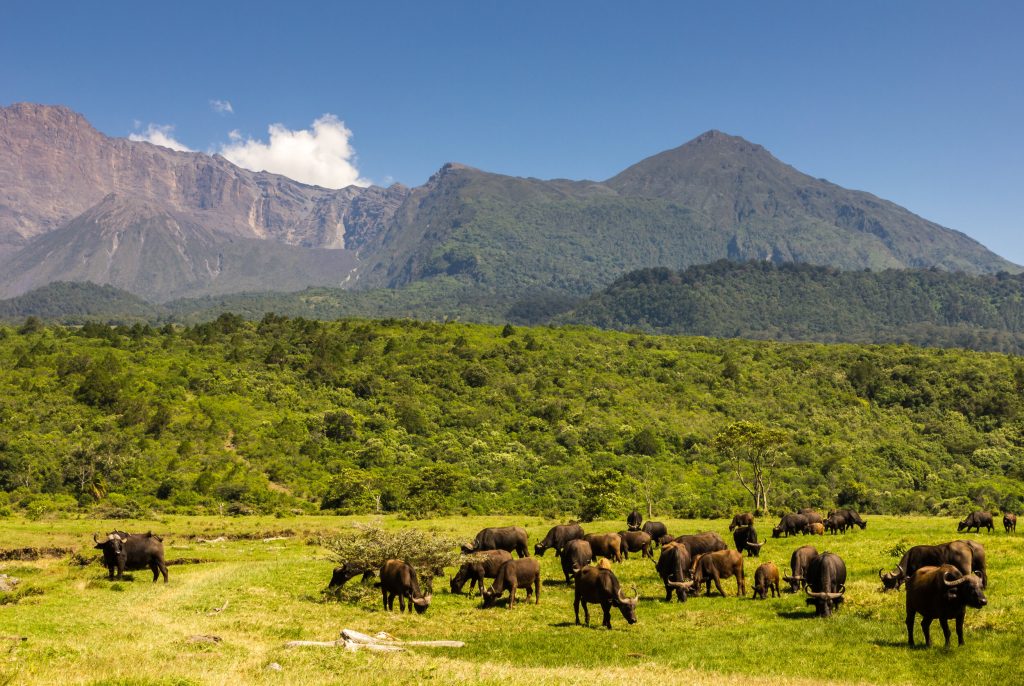

3. Rwenzori vs Kilimanjaro: Trekking and Climbing Time
Understanding how much time is taken to trek and climb Rwenzori or Kilimanjaro is the first step in planning your adventure. Either Kilimanjaro or Rwenzori mountain offer different routes and experiences. These routes have varying durations depending on the level of challenge and the specific goals of your trek. Hence read our detailed Rwenzori vs Kilimanjaro guide below about trekking time for these two mountains.
Mount Rwenzori: A Multi-Day Expedition
- Longer Routes of Trekking Rwenzori: Generally, Rwenzori Mountain requires a longer trekking period than mount Kilimanjaro. The usual time for trekking the Rwenzori routes is around 7-12 days. While the usual normal and most popular trekking route takes 7-12 days, this would depend on specific paths. These specific paths are taken with the pace of the groups. Normally it takes around 7-9 days. However, Mount Margherita’s summit aspiring trekkers can make an extended journey unto 10 or 12-day treks depending on the trekkers. Additionally, it calls for challenging trekking routes upwards, acclimatization on the way to the top of Mount Stanley, and not being able to move fast, since the grounds are really swampy and difficult.
- Challenging conditions and pace: The time taken in mountain Rwenzori is also strained by struggling conditions of frequent rain, boggy terrain. Also steep ascents that often make progress slow and take more days compared to other mountains. This, in turn, has to be slower-not only for safety but also for full acclimatization to the altitude. Especially when one intends to make it to the higher peaks, such as Mount Margherita. Taking longer days on mountain Rwenzori allows trekkers and climbers to take in the different faces of landscapes. Also to truly immerse themselves in the far-flung wilderness of mount Rwenzori.
- Rest Days and Acclimatization: Rest days are often catered for in the Rwenzori itinerary because of the technical natures and the altitude. These rest days, while important to the body for physical rest. Also offer good opportunities to make short walks around, enjoy breathtaking scenery, and get ready psychologically for the tougher parts of the climb. Acclimatization is important if one has to conquer the high peaks of mountain Rwenzori. Hence. more time spent on the mountain assures the trekkers are ready for the final ascent.
Mount Kilimanjaro: A Flexible Adventure
- Route Duration Variation: Mountain Kilimanjaro boasts a variety of Kilimanjaro trekking routes, with a duration differing between them; in turn, different trekkers can opt between routes to match their schedules or experience level. The shortest routes, like Marangu route and Rongai Routes, take about 5 to 6 days to make it to the summit and back. These shorter routes, however, can be very limiting regarding time for acclimatization, hence predisposing one to altitude sickness. The more popular routes, like Machame route and Lemosho Routes, take about 7 to 8 days. They also give a better tempo with superior acclimatization opportunities. This is longer with Northern Circuit, often up to 9 to 10 days of great views in an uncrowded environment.
- Summit Night: The Final Push: Despite differences in various routes, Summit night, in particular, happens to be the final push. Usually towards the peak that is taken into consideration with mount Kilimanjaro climbs. This generally is the last ascend that happens by midnight where most Kilimanjaro trekkers and climbers arrive at sunrise. It starts at midnight in the arctic zone, having been a daunting climb of around 6-8 hours before an easier-but-no-less-hurting. Also, relatively short ascent back to the base camp-the final day total usually ranges between 10-16 hours because time varies significantly due to many reasons like gait and course of route one follows.
- Acclimatization Strategies: Mountain Kilimanjaro has different routes that allow various acclimatization strategies. Longer routes such as Lemosho and Northern Circuit offer gentler ascents, thus allowing mount Kilimanjaro trekkers more time to acclimatize. Most of the Kilimanjaro itineraries have built-in acclimatization days where trekkers go up higher during the day. Then descend to lower camps to sleep, following the principle “climb high, sleep low”. These are crucial strategies that will help reduce altitude sickness and increase one’s chances of summiting successfully.
- Descent and Celebration: After summiting, descending is usually considerably faster and takes anything from 1 to 2 days. To get back to the base camp via most routes. The speed with which the descent is made can be punishing on the knees. Also, great care is taken especially when one walks down through rock and scree-filled areas. This faster descent also allows more spending time celebrating having reached the summit of Africa’s highest peak. Many mountain trekkers and climbers of Kilimanjaro meet for final celebrations at base camp or towns nearby.
KIlimanjaro vs Rwenzori: Time Investment for an Unforgettable Experience
Mountain Rwenzori demands far more time investments-the usual circuits running from a minimum of 7 to even up to 12 days of Rwenzori trekking. Hence enabling complete engrossment within this outskirted deep wilderness, as well as much acclimatization, working up challenging stretches with carefulness and slowly.
Climbing time for Mount Kilimanjaro can range from 5 to 10 days, depending on one’s choice of route. The factors that contribute to such varying options in routes and acclimatization strategies vary from quick ascents to leisurely. Also, well-paced climbs, accommodating the wide spectrum of fitness and experiences.
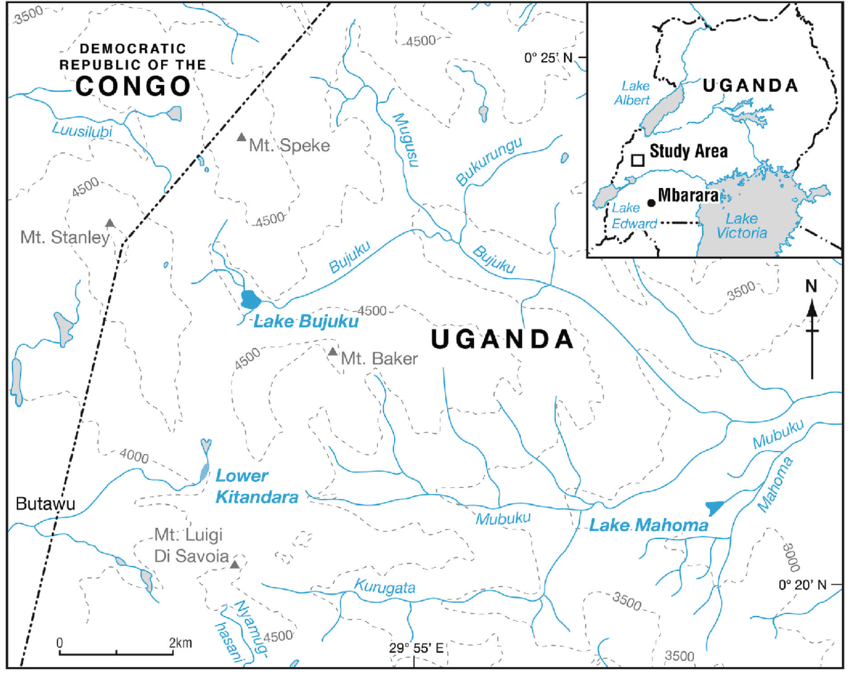
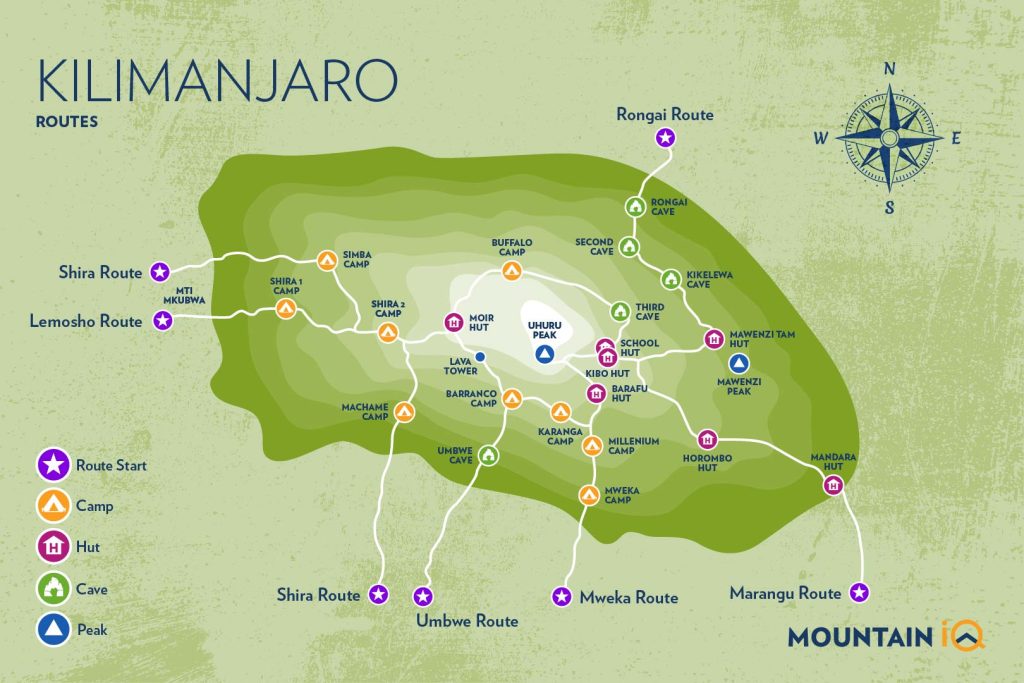
4. Accessibility: Rwenzori vs Kilimanjaro
Accessibility defines an African trekking or climbing adventure tour. The accessibility to the base of the mountains, availability of facilities, and local infrastructure will go a long way in defining the experience. Either Mount Rwenzori or Kilimanjaro offer unique accessibility features that may affect your decision based on your travel preferences.
Mount Rwenzori: A Journey to the Remote Wilderness
- The Rwenzori Mountains, sometimes called the “Mountains of the Moon,” are located in western Uganda. Also, bordering the Democratic Republic of the Congo. It is a very remote location and adds to the sense of adventure and seclusion that trekkers will have. It means, that getting to the starting point of your mountain Rwenzori trek requires more in terms of planning and time. The main entrance to the Rwenzori Mountains is the town of Kasese. Also, which is about 370 kilometers from Uganda’s capital, Kampala.
- Getting to Kasese: Traveling to Kasese is normally by road from Kampala. The journey may take about 6 to 8 hours depending on the flow of traffic and condition of the road. Our Rwenzori itineraries/tour packages include transport since we have the best 4×4 car rentals in Uganda. This is a long and a very scenic journey through Uganda’s countryside. There are domestic flights available from Entebbe International Airport to Kasese Airstrip, which will greatly reduce travel time. From Kasese, some other arrangements can be made to get to Rwenzori National Park about an hour’s drive from there.
- Poor Infrastructure: The infrastructures around the Rwenzori Mountains are less developed compared to the more popular tourism destinations. Options for Rwenzori accommodation including luxury and budget hotels at Kasese and near the Rwenzori park are extremely limited. Hence providing a few lodges, guesthouses, and campsites where trekkers can be put up. Comfortable though somewhat basic facilities, they exist nonetheless. This adds to the ruggedness and off-the-beaten-track experience. And may require one to plan a bit in advance as regards provisions and logistics.
- Entry into Parks and Rwenzori Permits: Entry into Rwenzori Mountains requires a permit, which is provided by the UWA; in most cases, this is pre-arranged through some tour operator or directly with the UWA itself. The process is fairly simple but allows should be secured long before peak trekking seasons. In comparison with the majority of the other mountain destinations discussed here, Rwenzori National Park sees fewer crowds-a nearly exclusive experience. But the degree to which the trek requires thorough planning and permissions is an important access detail to note.
Mount Kilimanjaro: A Well-Established Trekking Destination
- Distance from Key Airports: Mt. Kilimanjaro has one of the most accessible high-altitude treks in the world. Reach Kilimanjaro via Kilimanjaro International Airport (JRO), 40 kilometers from Moshi and 50 kilometers from Arusha. These are the major feeder towns for trekkers, and by road this junction is properly linked to the mountain base. The airport receives many international flights, so its easy for trekkers from every part of the globe to reach the region.
- Well-developed infrastructure: Infrastructure related to tourism is well-developed around Mount Kilimanjaro. Starting with different types of accommodations-from budget hostels to luxury lodges-multiple restaurants. Additionally, gear-renting shops, and tour operators are found in both Moshi and Arusha. The roads leading to Kilimanjaro National Park gates are well-serviced, hence transfers from your hotel to the trailhead are comfortable. Due to easy accessibility and availability of services, Kilimanjaro is one of the most convenient destinations for clicmbers of all experiences.
- Multi-gate Entries: There are a number of entry gates in Kilimanjaro, with each gate offering a different trek route. The most popular gates in Kilimanjaro include Marangu, Machame, Lemosho, and Rongai. These gates are easily accessible from Moshi and Arusha, with most routes involving a short drive from your accommodation. The availability of multiple entry points allows Kilimanjaro climbers to choose a route that best suits their time, fitness level, and trekking experience. Each gate has with knowledgeable park rangers and has facilities to assist trekkers in starting their climb.
- Easy Permit Process: The permit for climbing mountain Kilimanjaro is easy to get. A number of tour operators who have packages include permits in their packages. In addition, entry gates efficiently handle everything. Because Kilimanjaro is so popular, the process for permits is well developed, with clear guidelines and support for trekkers. Hence the mountain is protected, while giving Kilimanjaro trekkers a hassle-free start to their adventure.
Kilimanjaro vs Rwenzori: Accessibility for Every Adventurer
Mount Rwenzori offers something quite unique to a trekker looking for more remote and less-traveled destinations-a tranquil getaway and an adventurous hike. Getting to the Rwenzori forms part of the journey and takes planning, including patience with an element of travel challenge.
Probably, Mount Kilimanjaro has the most accessible trekking destination in Africa due to its well-developed infrastructure in comparison with other places. Additionally, its proximity to international airports, various entry points around it. The ease of access and well-organized routes to the summit make Kilimanjaro far more popular to climb. You can climb Kilimanjaro virtually any level of experience and the adventure somewhat easier.
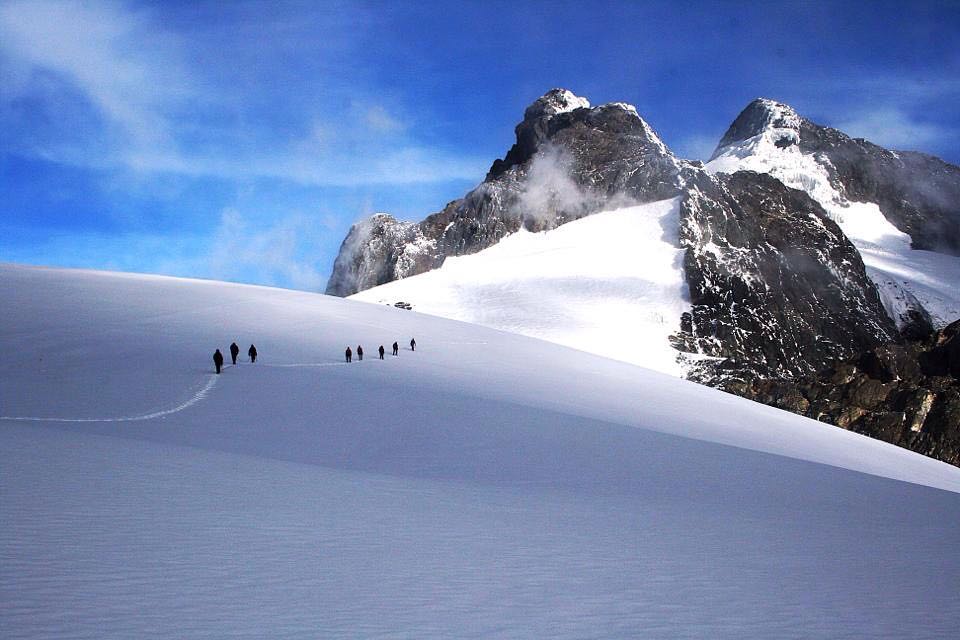
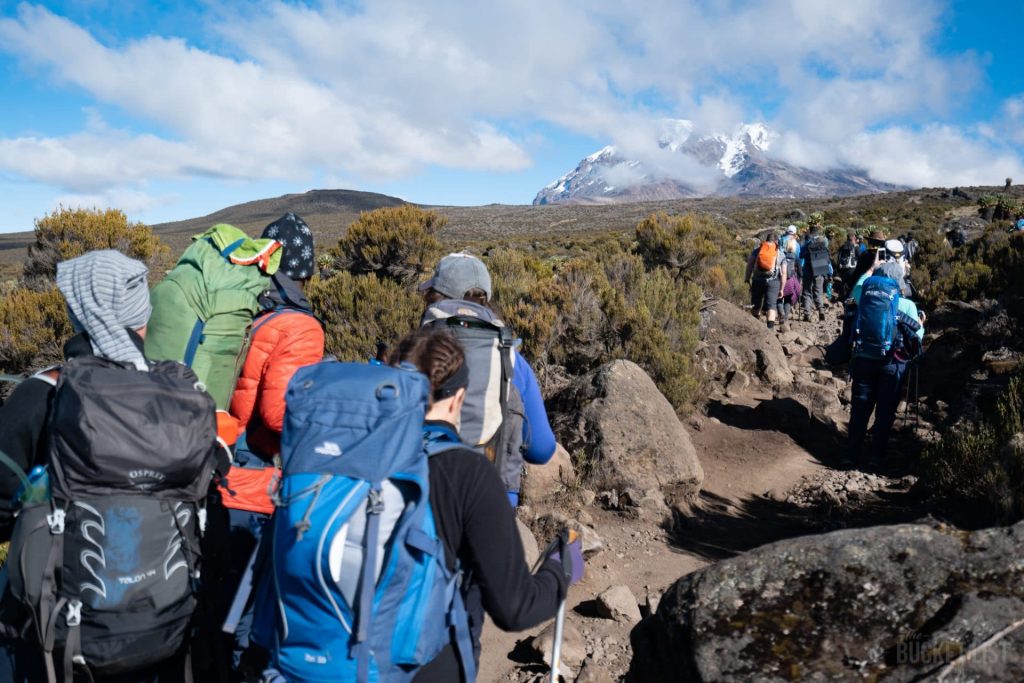
Rwenzori vs Kilimanjaro: Which Is Best for Trekking & Wildlife?
The Best for Trekking- Rwenzori vs Kilimanjaro
- Rwenzori trekking is more serious since the landscape includes rough terrain and snow-capped peaks, pass through landscapes to the summit.
- Climbing Kilimanjaro is one of the most popular options with well-marked routes leading right to summit of Africa’s highest peak. Our Rwenzori vs Kilimanjaro guide will assist you in selecting which mountain is best for your hiking adventure
The Best for Wildlife & Safaris- Rwenzori vs Kilimanjaro
- On its borders are Queen Elizabeth National Park for Big Five safari Uganda and Kibale National Park for chimpanzee treks.
- National Park close to Serengeti, Ngorongoro and Arusha, thus allowing the combination of some of the best safaris in Africa.
Best for Cultural Experience- Rwenzori vs Kilimanjaro
- Rwenzori Region offers Bakonzo people experiences, where you are able to learn traditional Rwenzori life.
- Kilimanjaro Region has a rich Maasai culture; many villages are around to visit. You can opt for Rwenzori or Kilimanjaro cultural tour or combine both with help from Kilimanjaro Rwenzori trekking experts.
5. Conclusion: Rwenzori vs. Kilimanjaro – Which One Should You Choose?
Rwenzori trekking is glacial, a bit more challenging, and less crowded, with very different wildlife. Looking forward to the iconic safari, with a glimpse into Maasai culture? During your summit of Africa’s highest peak, climbing Kilimanjaro would be ideal. Has our Rwenzori vs Kilimanjaro guide helped you? Consider contacting us: Rwenzori Kilimanjaro Experts for more information about these two mountains.
Call to Action- Rwenzori vs Kilimanjaro
Ready to explore mountain Rwenzori or Kilimanjaro regions? Our Kilimanjaro vs Rwenzori guide will guide you in choosing which mountain to hike. Book your trip now and experience the best that these stunning landscapes and vibrant cities have to offer. Discover the hidden gems and insider tips that will make your adventure truly unforgettable. Hence our detailed Rwenzori vs Kilimanjaro guide shows you which mountain is harder to climb. You will either choose Kilimanjaro or Rwenzori or both thereby making your trip a success.
Rwenzori trekking itineraries
Rwenzori Guide
- Rwenzori trekking guide
- When to visit Rwenzori
- How to get to Rwenzori
- Luxury Rwenzori Accommodations
- Budget Rwenzori Accommodations
- Attractions in Rwenzori
Kilimanjaro climbing tours, Tanzania
Kilimanjaro Guide
- Kilimanjaro climbing guide
- Luxury Kilimanjaro Hotels
- Cheap Kilimanjaro accommodations
- Gameparks near Kilimanjaro
Useful links + other African safari packages
- Rwenzori trekking services
- Kilimanjaro Climbing guide
- 3 day gorilla trekking self drive to Bwindi
- Rwenzori trekking guide
- 3 day Queen Elizabeth self drive from Kampala
- self drive Uganda
- Car rentals 4×4 East Africa
- Masai Mara Great Migration
- Serengeti Wildebeest Migration
- Big 5 safari Uganda
- Best time to visit Rwenzori
- what to pack for your trek
- Rwenzori vs Kilimanjaro

